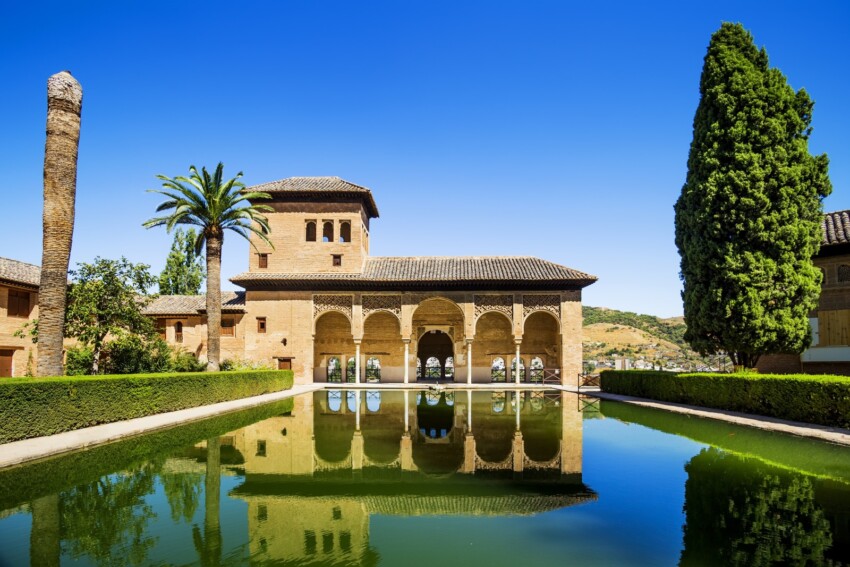
The Alhambra is to Granada what the Colosseum is to Rome or St Mark’s Square to Venice… it would make no sense to come here and not want to see it. The ‘red fortress’, as it is called from the colour of the materials used for the walls surrounding it, is the city’s landmark building: one of the highest examples of Andalusian architecture and art, it is a palace-fortress of unparalleled beauty.
Built for defensive purposes on the Sabika hill, it was originally a walled city similar to an Arab medina completely independent of the centre of Granada. Over the centuries it was transformed from a military stronghold into a sumptuous palace with richly decorated rooms, large courtyards and gardens. When the Catholic Monarchs conquered Andalusia at the end of the 15th century, the Alhambra was spared the destruction that affected other Moorish buildings and became the royal palace of the Spanish rulers.
The splendour of the Alhambra’s palaces is sometimes overshadowed by the pleasure of a stroll through its gardens and courtyards, adorned with arabesque fountains, statues, ponds and joined by paths and arcades.
Calculate at least 3-4 hours for a standard visit of the Alhambra complex, but if you want to see all the rooms at leisure, make sure you have a whole day available.
Contrary to what many people think, the Alhambra is not a single construction but a veritable citadel that occupies an area of over 100,000 square metres and contains several buildings inside. Let us now see what the top attractions of the Alhambra are.
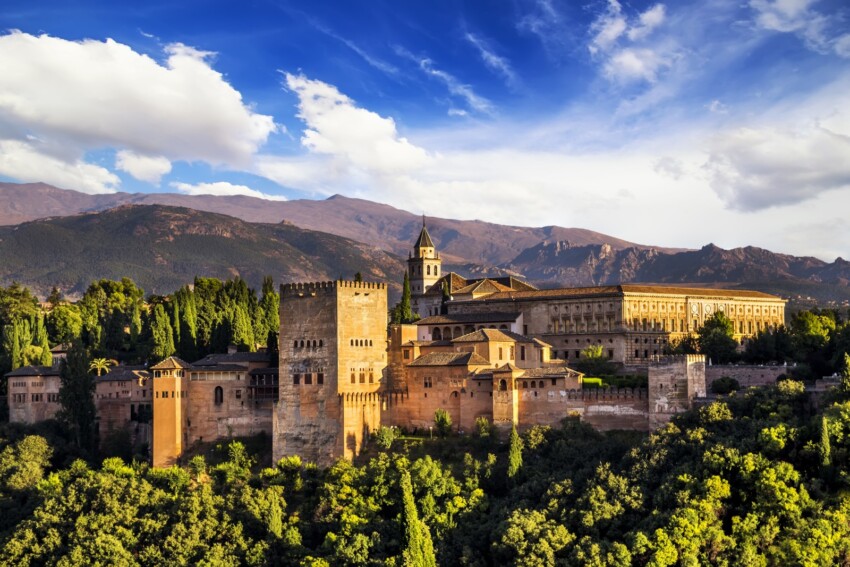
The Alcazaba is the historical core of the Alhambra: a military construction of which some bastions and towers remain today. You can climb to the top of one of them, the Torre de la Vela, and enjoy a splendid view of Granada.
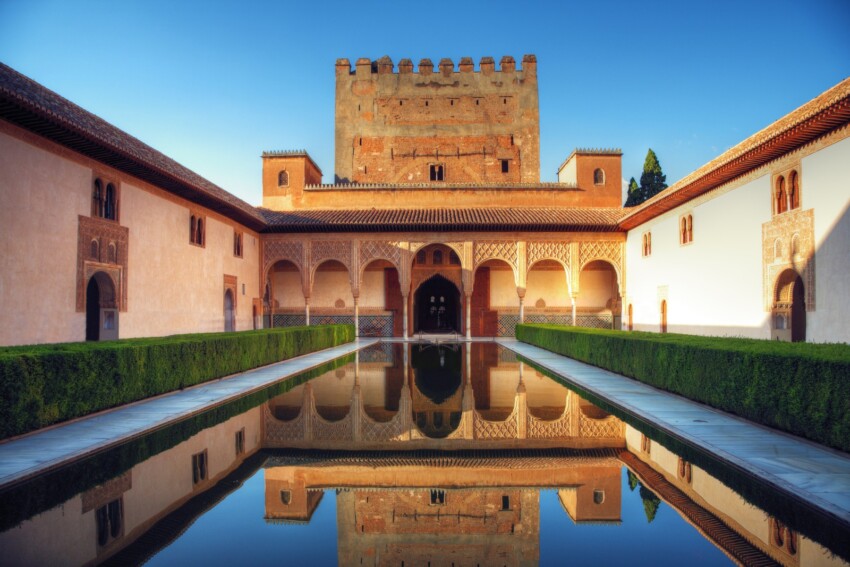
The Palacios Nazaríes are a complex of elegant buildings in which the court had its seat; they include both private dwellings and buildings with administrative or representative functions.
During a visit to the Palacios Nazaríes you can see the Mexuar, the Palacio de Comares, El Partal and the harem also known as the Palacio de los Leones. Each of these spectacular buildings was commissioned by a different sultan and reflects his personality.
When purchasing your ticket to the Alhambra, you will have to choose the time of entry to the Palacios Nazaríes: make sure you respect it otherwise you will not be able to enter.
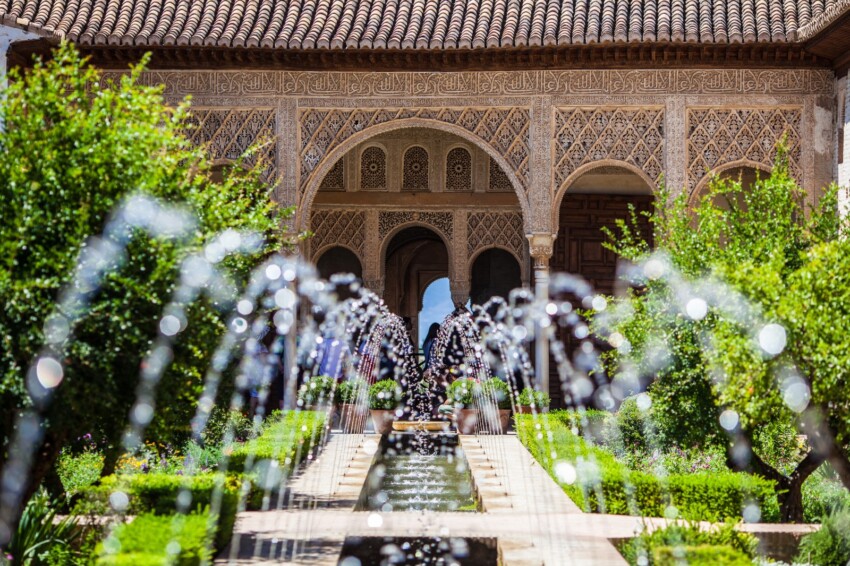
The Generalife is an area outside the walls, but still part of the Alhambra, which included the summer residence of the Nasrid sultans and an agricultural area.
Elegant and shady, the Generalife is an oasis of coolness and peace that regenerates all visitors to the Alhambra. Strolling here, you will find it hard to close your eyes and imagine the rich and idle lives of the Arab and Spanish nobles who populated this enchanting city within a city over the centuries. What a pity not to have it entirely to yourself as was possible for kings and sultans!
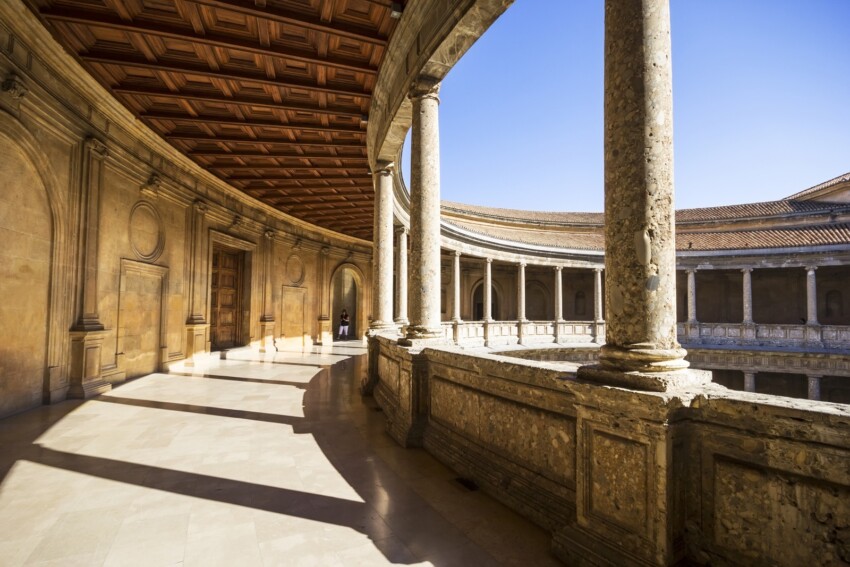
The Palacio de Carlos V is a Renaissance-style building that was the residence of Charles V of Habsburg, King of Spain and Emperor of the Holy Roman Empire in the 16th century.
It is currently open to the public and its first floor houses the Museo del Alhambra, which exhibits a collection of artistic objects originally present in the Alhambra architectural complex or related to the cultures that influenced the development of the palace-fortress.
Given the large number of visitors who flock to the Alhambra’s ticket offices every day, we recommend book tickets in advance online or filling in the form below.
To discover everything about Granada’s masterpiece, you can have an expert guide accompany you during your visit. The cost is a little higher than the entrance ticket and even purchasing this visit will save you time by avoiding queuing at the ticket office.